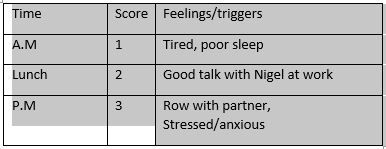#1 Great Trick for Optimal Thinking
- Trevor Simper
- Jun 12
- 2 min read
Updated: Sep 16

Emotional stability is not always easy to come by, and depending on the stressors you are facing at the moment it may be shakier — or else more stable — than usual. This idea, then, is based upon the idea of finding optimal (as opposed to under or over) arousal.
What is it?
This is a great self-diagnosis tool, using the inverted U graph which I’ve borrowed from a very popular idea around optimal arousal in sports psychology. Clearly, most of us can relate to feeling lacklustre, down, and not interested at one extreme… and agitated, nervous, and over-stretched at the other. And of course, in the middle is the sweet spot of optimal arousal. So this middle optimal section is, essentially, when we are feeling balanced and in control.

How to use it:
At 3 time points during the day, take a gauge of how you are scoring:
1 = low mood
2 = optimal mood
3 = high anxiety
After you have noted the score, write down your feelings and any triggers you note (see example below).

Do this over the course of 1–2 weeks so you can get a picture of some of the commonly contributing factors to your emotional stability.
Naturally, the idea is you gain an idea of what seems to depress, over-stimulate, or optimise mood. When you look at it, the inverted U is a great description of how people feel when they are attending an interview, competing in sports, or any other potentially stressful situation. If you were going to play a game of darts, for example, you might not care what your state was… or else, if you are competitive, you might over-care! The argument is that whatever the activity, optimal arousal/mood is where we mostly want to be. I can’t definitely control whether I win the darts match, but not caring or being very anxious are unlikely to help. But being ready to enjoy myself — and up for the challenge — will be optimal.



Comments